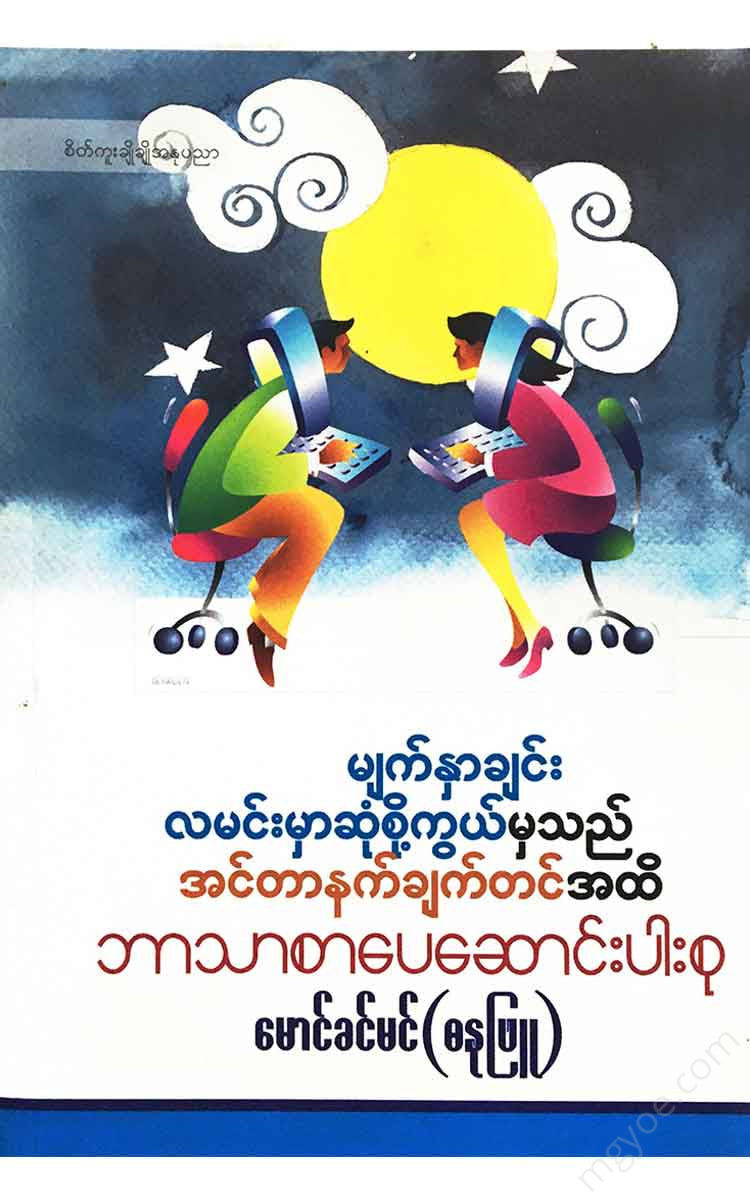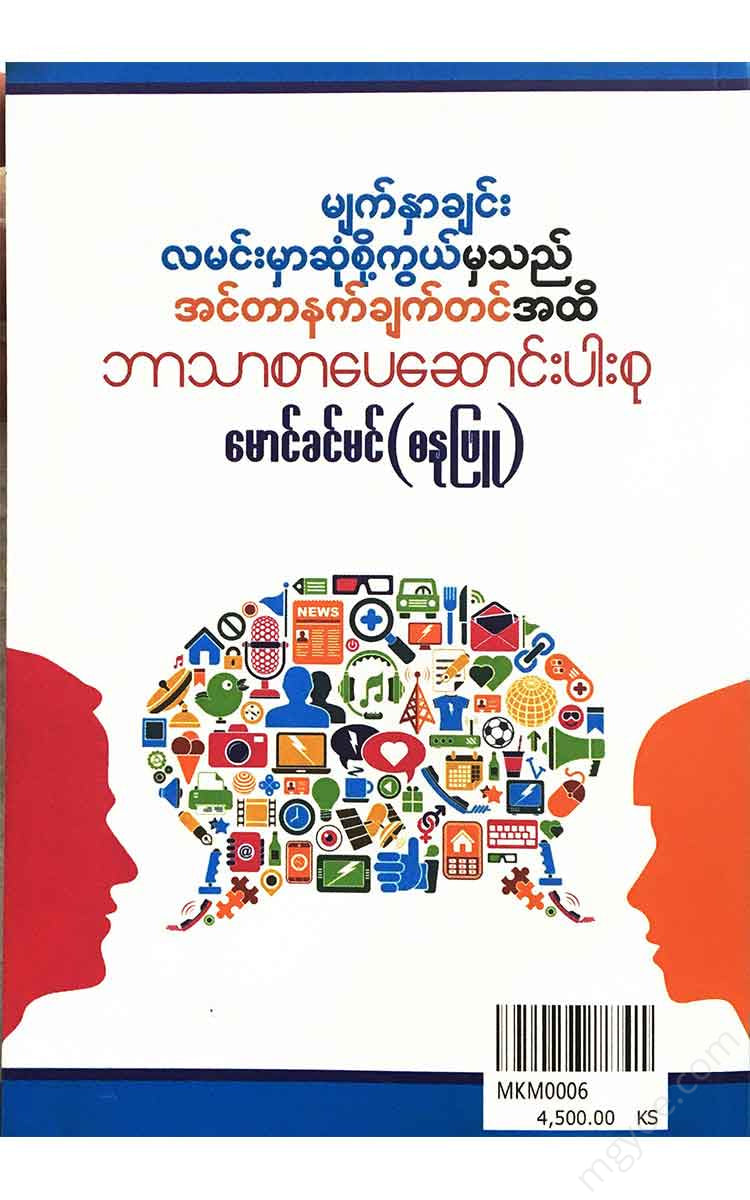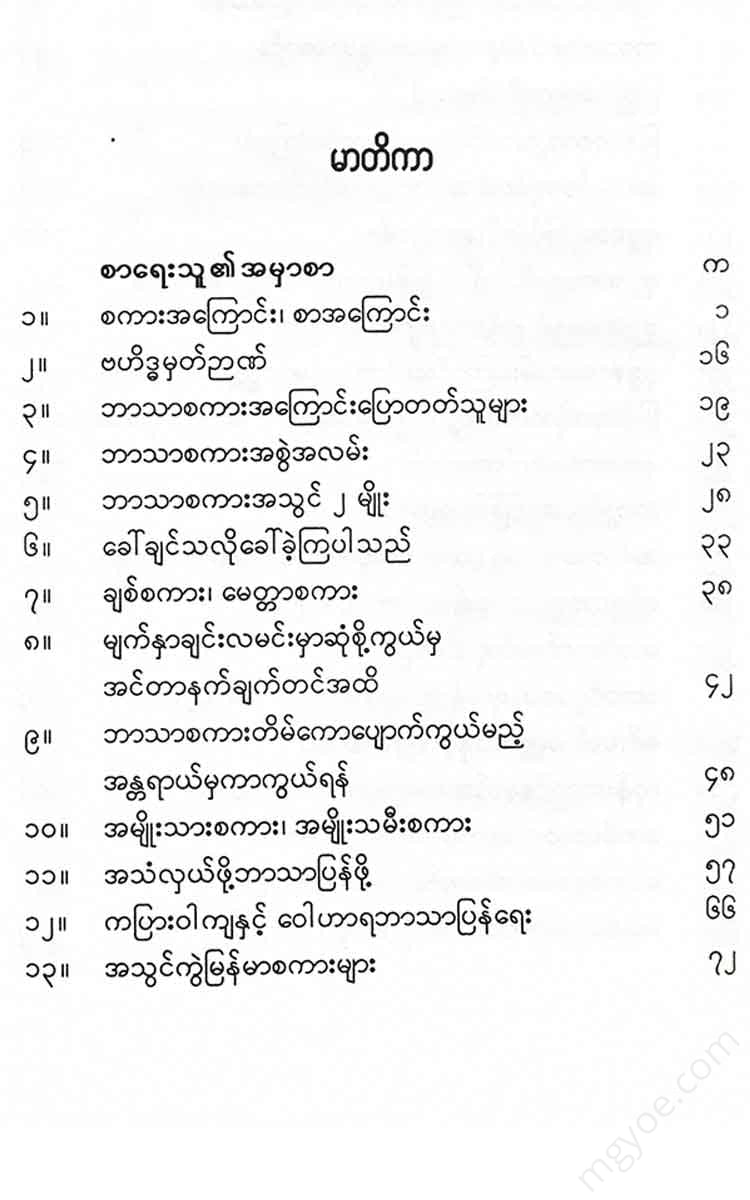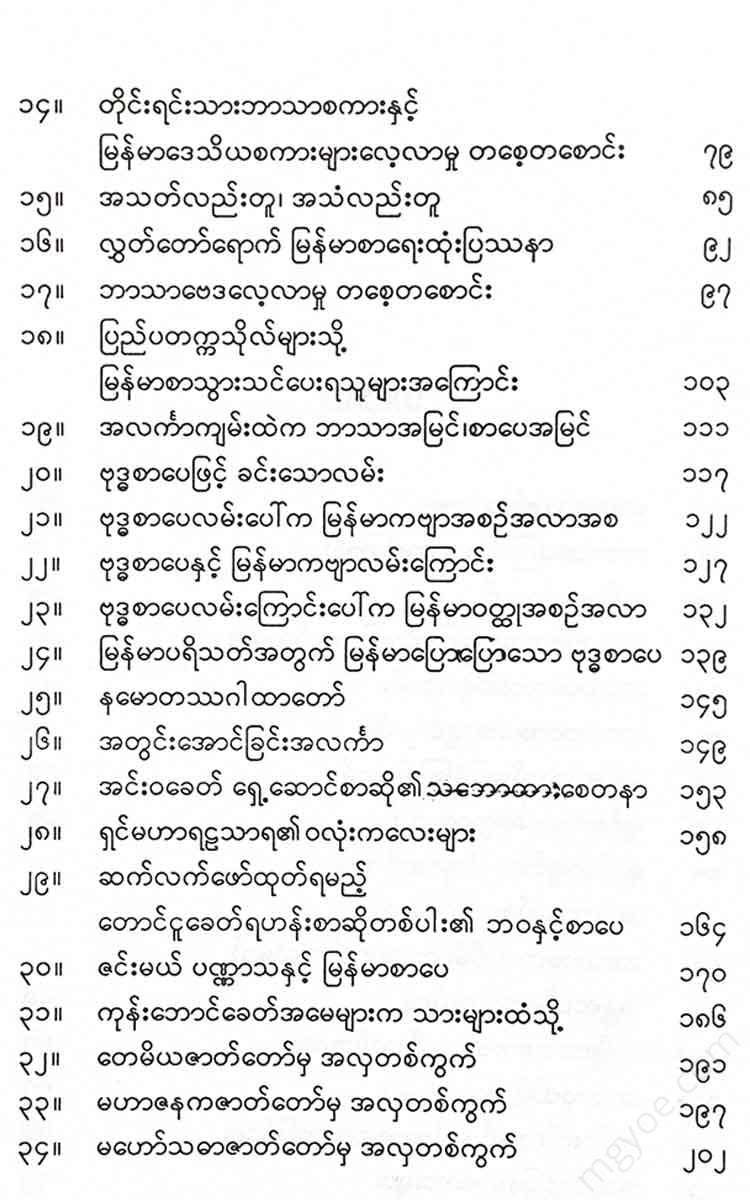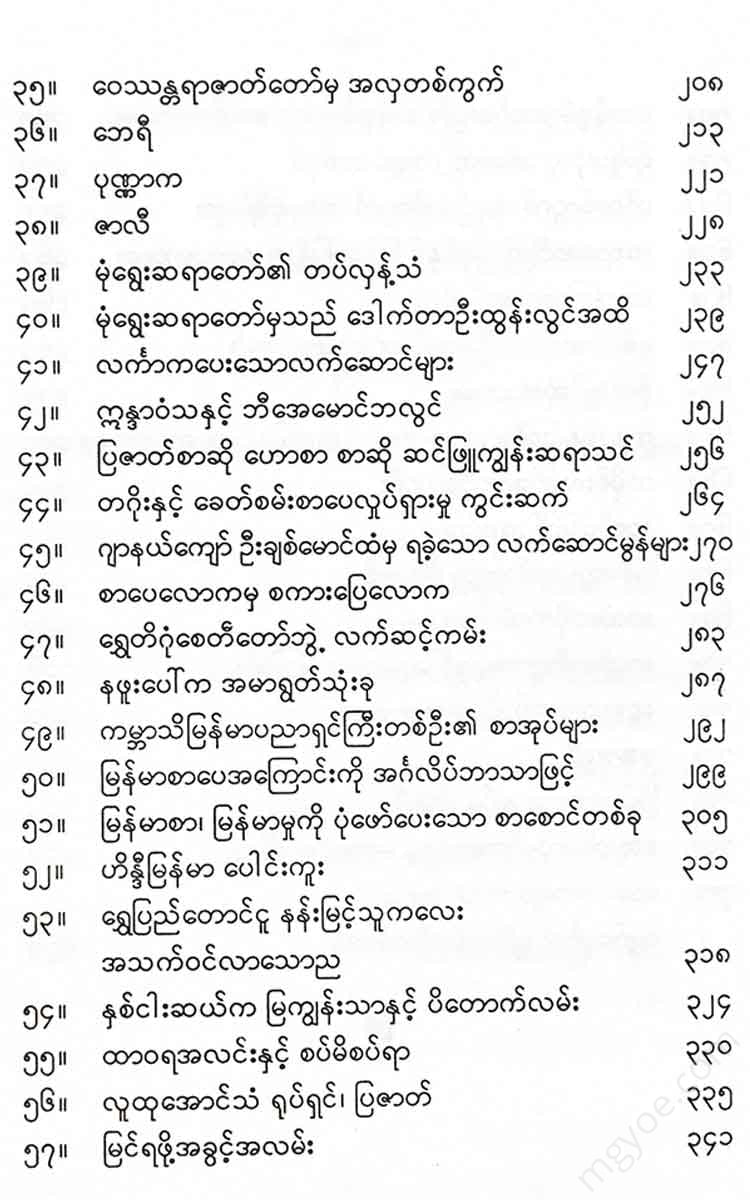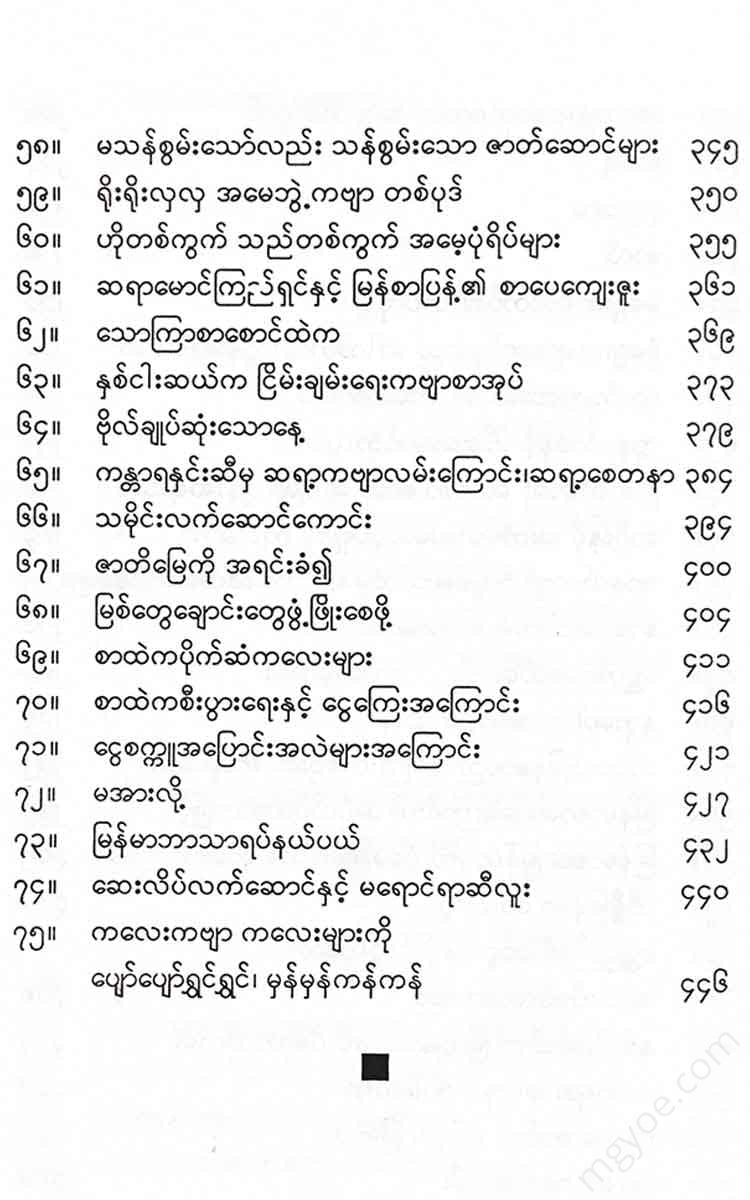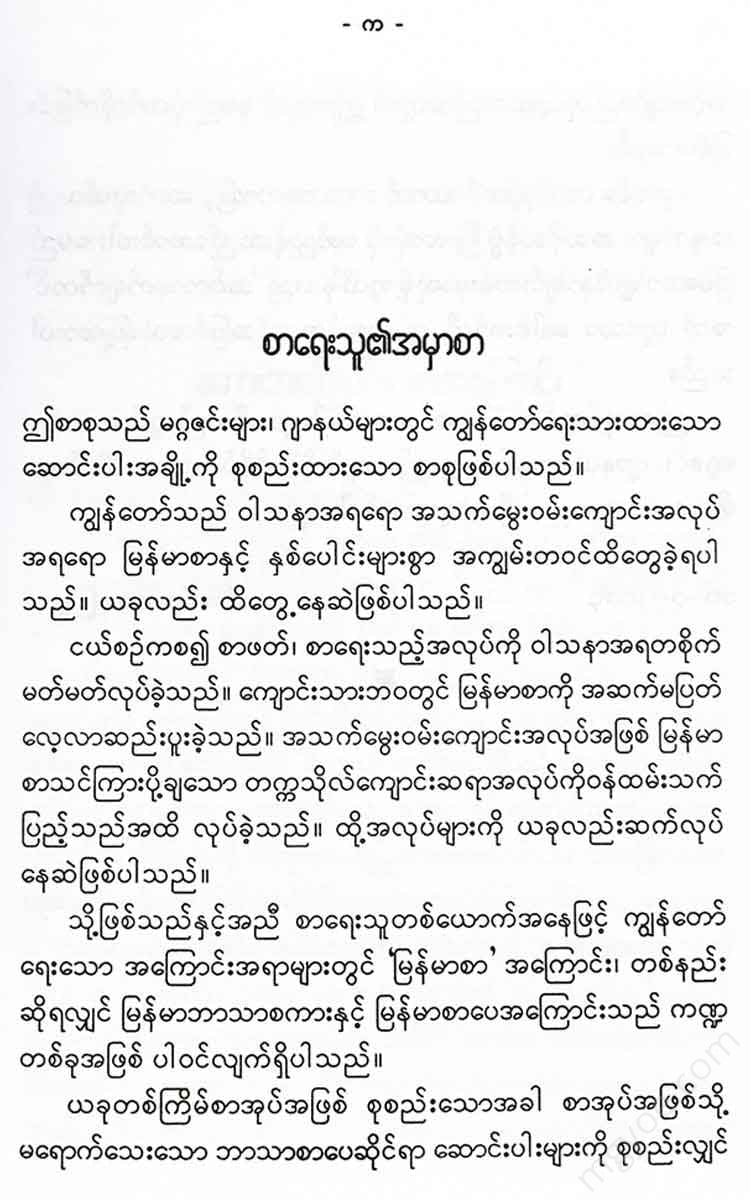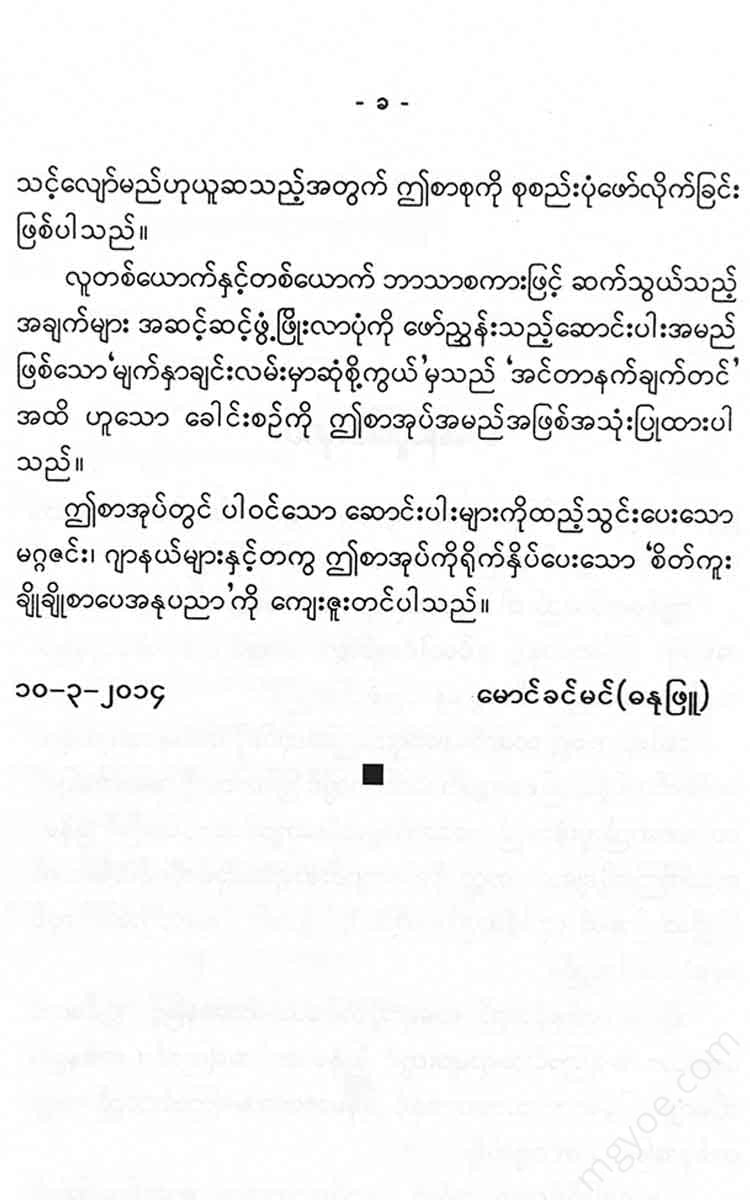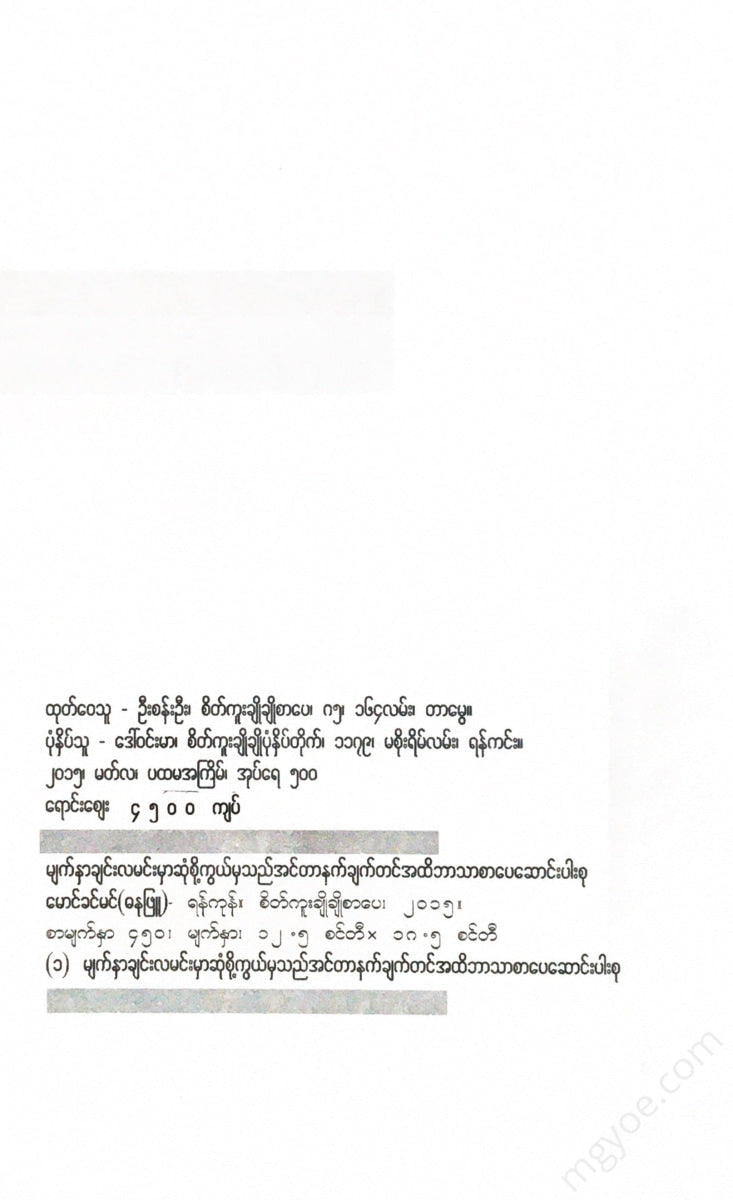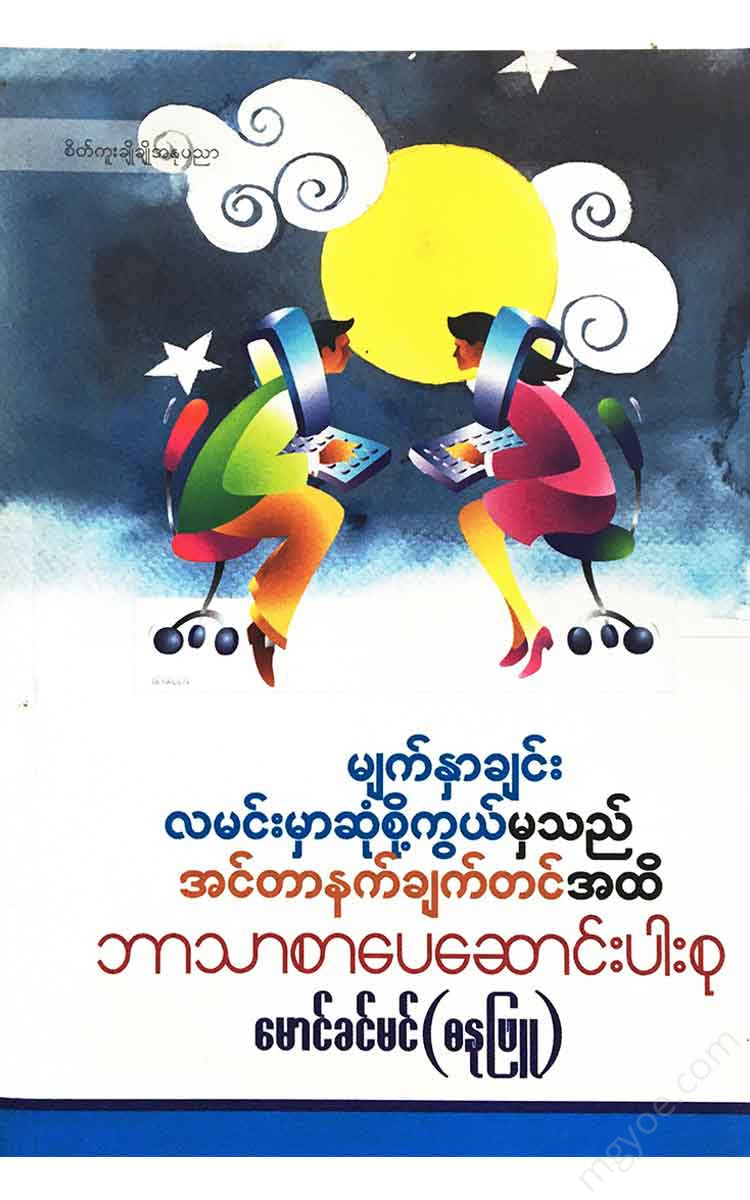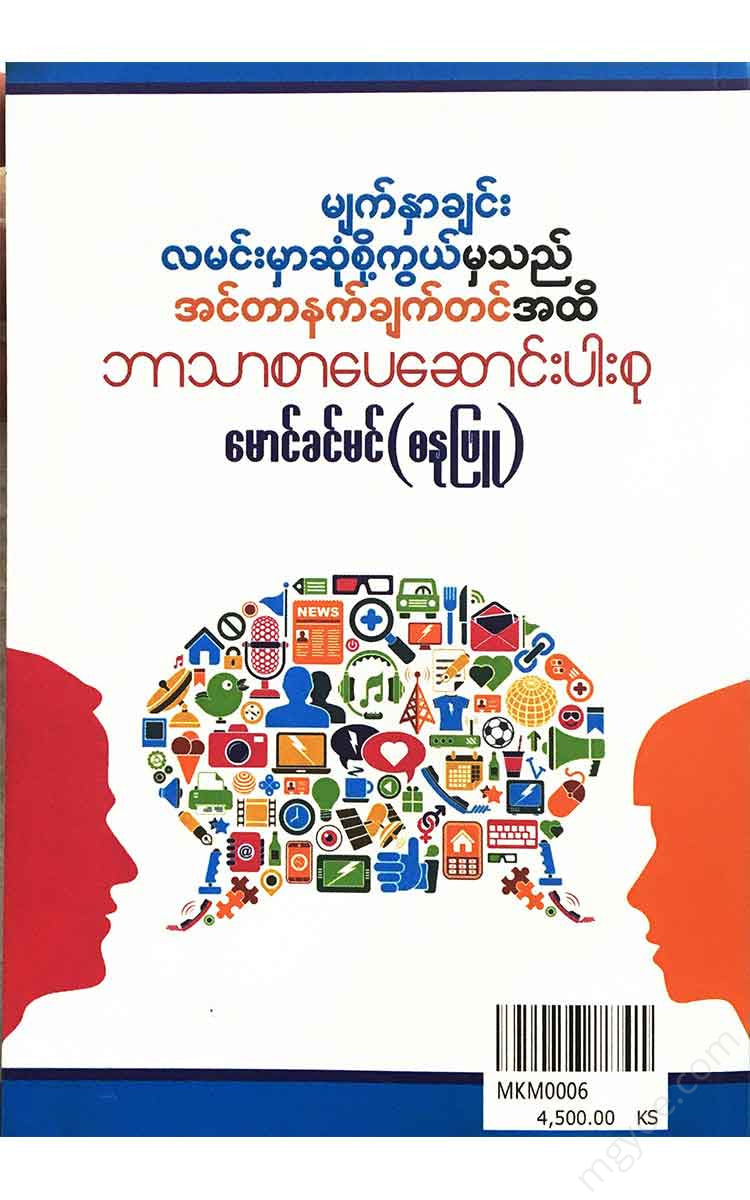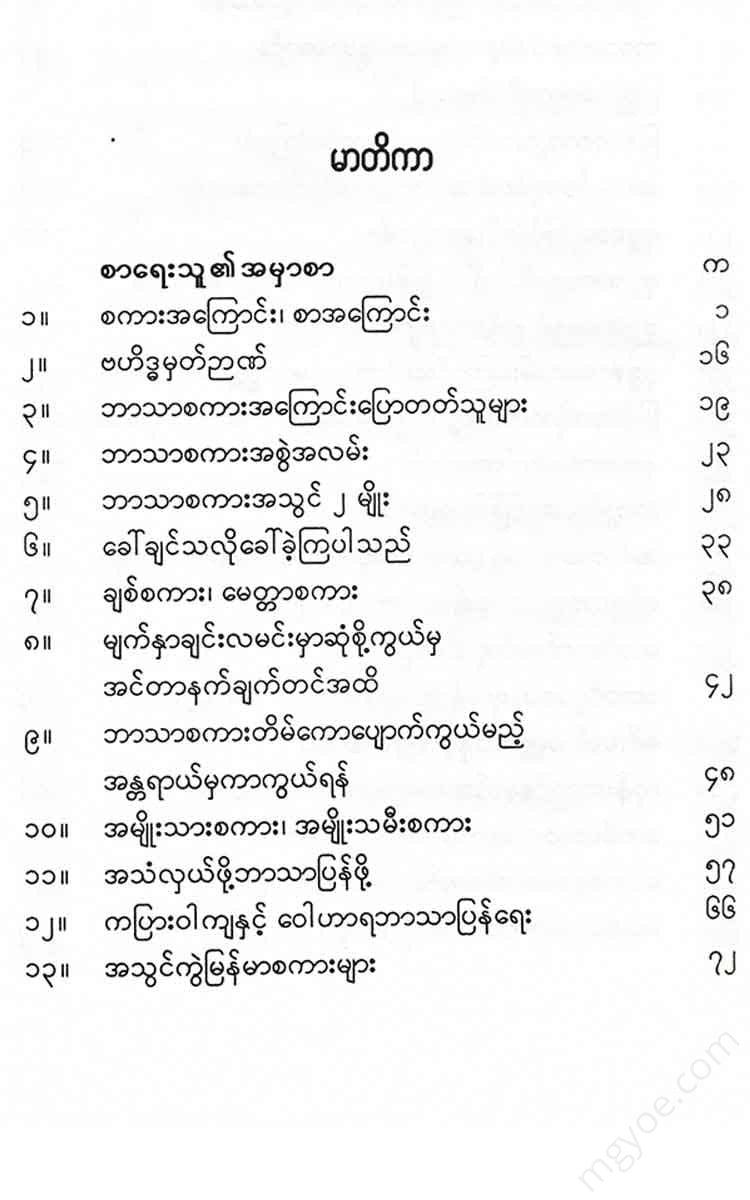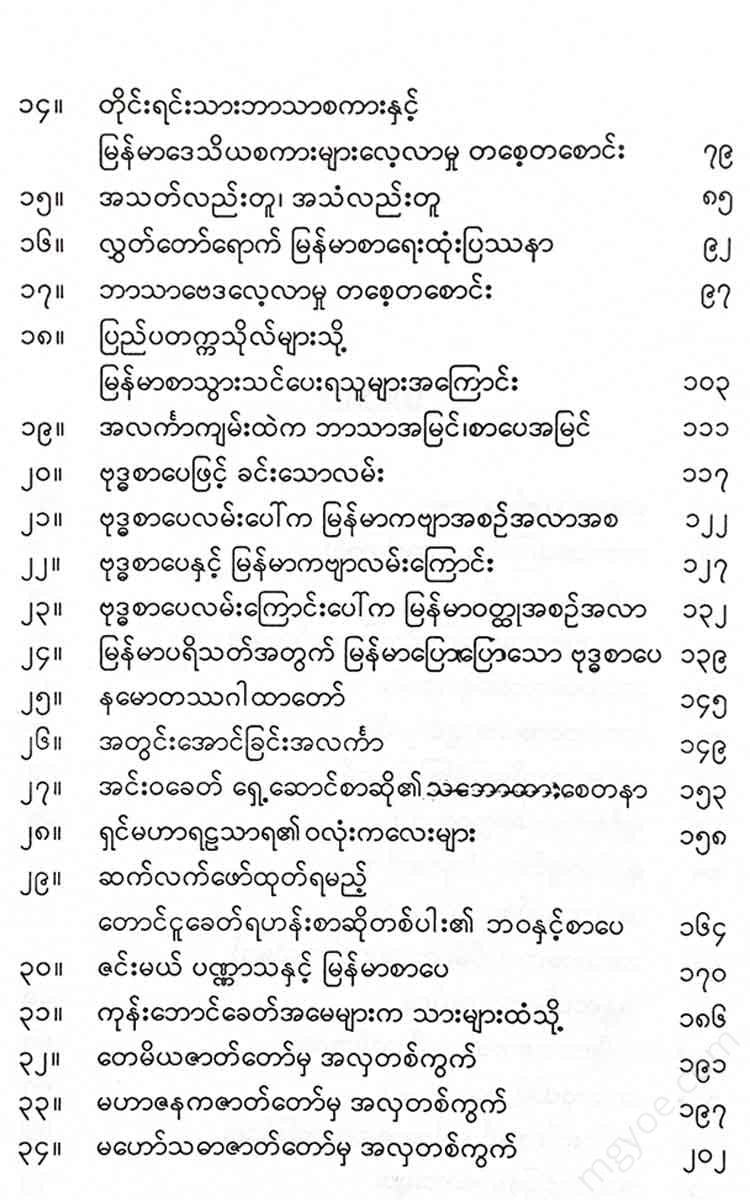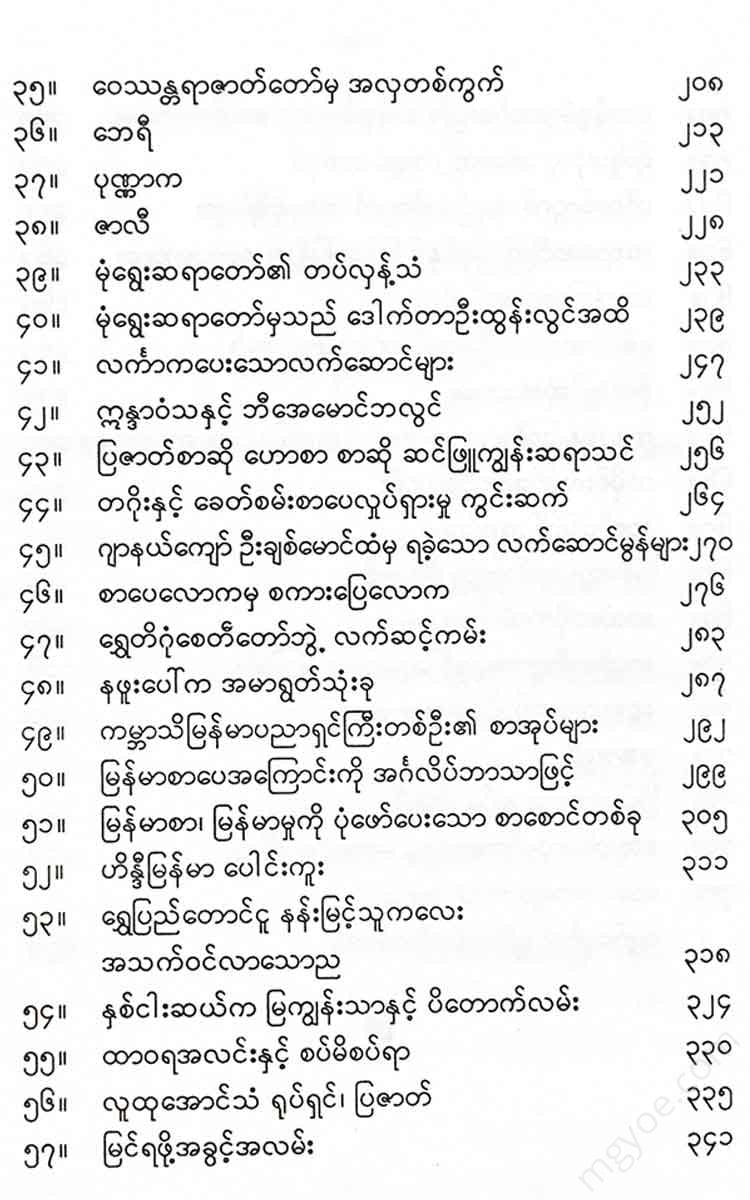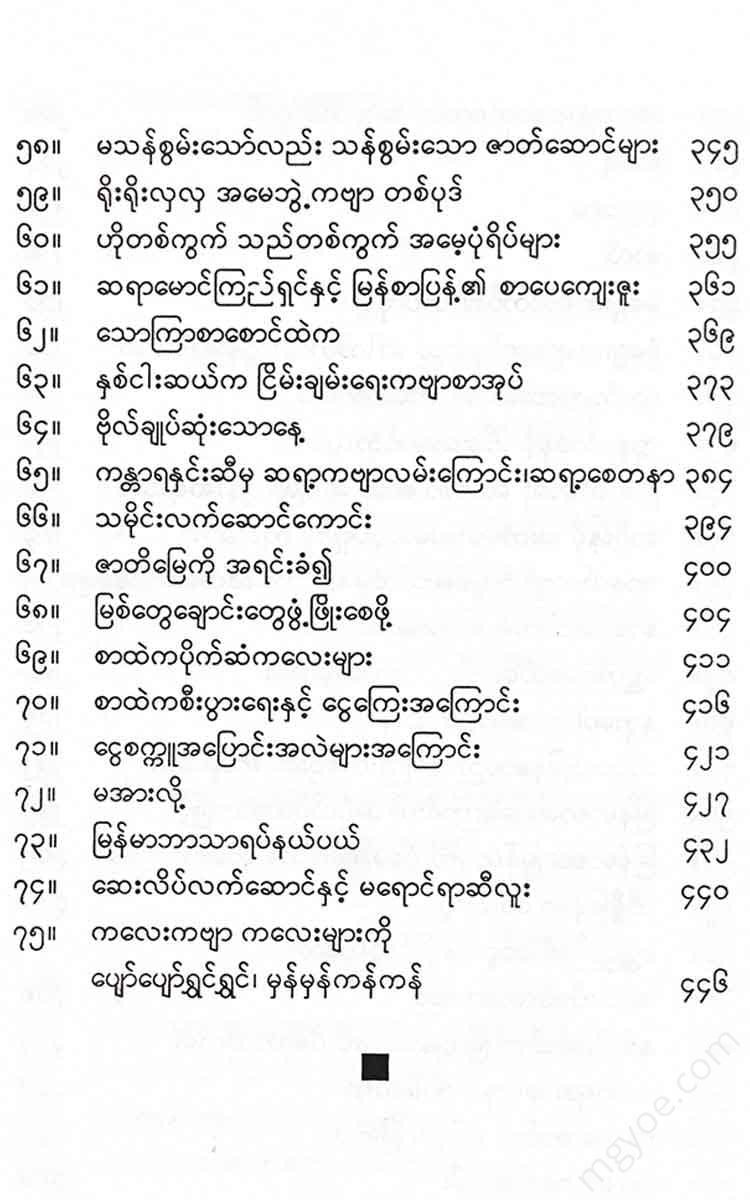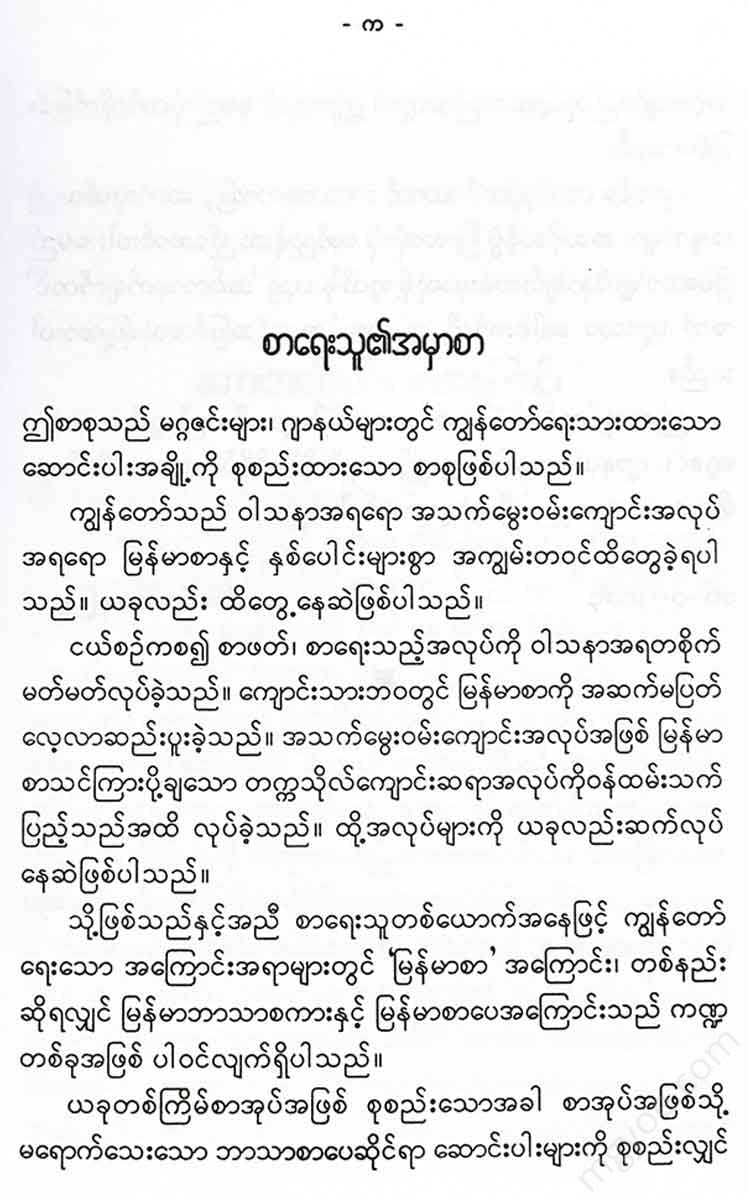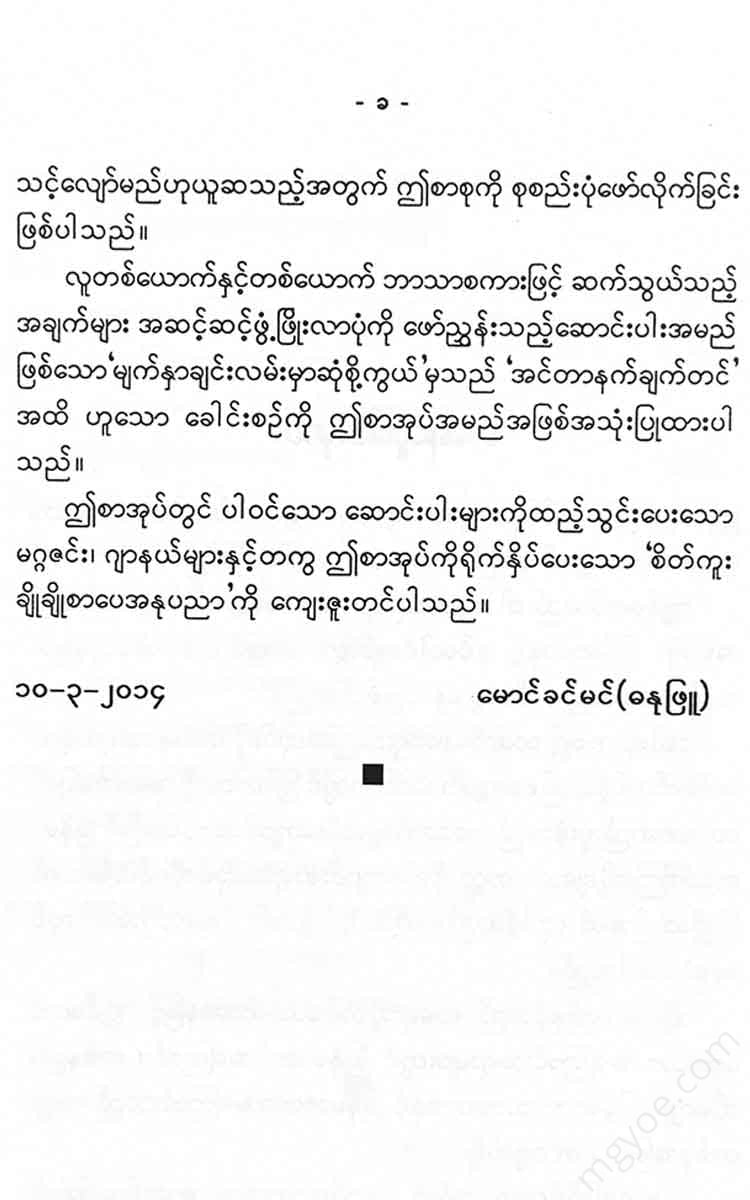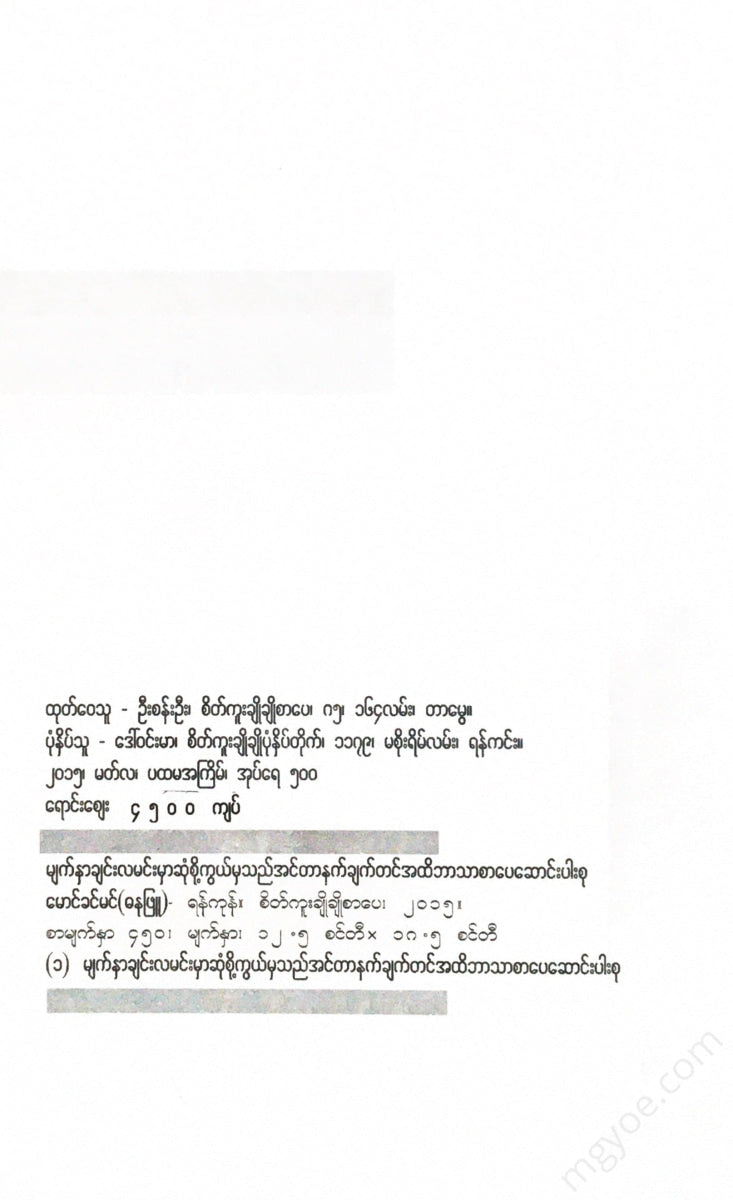စိတ်ကူးချိုချိုစာပေ
Maung Khin Min (Dhanuphuy) - I will not meet you face to face.
Maung Khin Min (Dhanuphuy) - I will not meet you face to face.
Couldn't load pickup availability
About words, about letters
I heard a funny story.
There was a rumor that a certain country was very rich in wise men. (Let's say that country was Varanasi.) So, to test the rumor, a wise man from another country came to Varanasi. As soon as he arrived, he saw a drunkard wandering around in a daze on the road. He thought, "This man is from Varanasi, he must be wise," and held up five fingers as a sign of his knowledge. The man raised his five fingers to mean, “Do you people of Varanasi keep the five precepts?” The drunkard interpreted this in his own way. He thought that the five fingers meant, “Can you drink five bottles of alcohol?” and so he raised his ten fingers to mean, “You can drink ten bottles.” The foreign sage replied, “Yes, the people of Varanasi keep the ten precepts,” and so he interpreted this in his own way. The sage patted his chest again. The drunkard immediately patted his chest and back. He patted his chest to mean, “Do you rule beings like a king?” The drunkard asked, “Doesn’t your heart get hot after drinking ten bottles?” and so he interpreted this in his own way, and patted his chest and back to mean, “You don’t get hot after drinking ten bottles.” The foreign scholar said, "Oh... they must be saying that their king rules without choosing between the people." He interpreted this and praised the people of Varanasi for their wisdom, before returning.
This story comes to mind when I think about language. When I think about language, I think about other ways that people can communicate with each other, just like language. When I think about the way people can communicate with each other through gestures, this story comes to mind.
We humans talk every day. From the moment we open our eyes in the morning until we close them at night. We talk to our family members. We talk to our colleagues. We also talk to various people who have a reason to communicate. I don't think there is a day when we don't talk at all. Even when we go to bed and dream, we still talk in our dreams. Language is the sounds we make by touching, opening, closing, and moving our lips, teeth, tongue, and palate. What are the things that are included in these words? We see, hear, touch, and eat various things. We encounter various things. We experience various things. These things can be expanded to cover the entire human culture of living. These social issues are marked and communicated with each other by speaking. Therefore, it can be said that language is an indispensable tool for humans.
No matter how great a person is, his value will only become apparent when he is present. It is only natural that his value will become apparent when he is absent. No matter how important a thing is, if it is with you and easily available when you want it, its value will only become apparent. It is also natural that its value will become apparent when it is absent. Therefore, when a person wants to evaluate the value of a thing, I think he should ask the question, "What would happen if that person or thing did not exist?" If you want to know the importance of a car, ask the question, "What would happen if there were no cars at all and only carts?" The importance of a car will become apparent. Similarly, as I said, if you want to show whether language is an indispensable tool for people, you should ask the question, "What would happen if there were no language, if people could not speak?"
It has been said that being a tool used to communicate with each other is one of the basic features of language. So, the question is, "How can people communicate with each other without language?" There are ways in which people can communicate with each other without language. Some of them were used before language appeared, and some of them are still used today. If we compare the way people communicate with each other using these methods with the way people communicate with each other using language (in other words, speaking), the "place of language" becomes clear.
Among these methods, the most prominent are the methods of communicating with people by showing visible signs. By using these methods, we can make others understand what we mean. For example, the method of signaling with lights to make it visible from one place to another, the method of signaling with smoke, and the modern method of signaling with red lights to stop, yellow lights to start the engine, There are various ways to signal, including "If the light is green, drive." The flag signal is also similar. Using these methods, you can make others understand what you mean without saying a word. | The method of communicating by gestures is also a prominent method. Experts say that people probably communicated with gestures even before they could speak. Even now, gestures are still used in conjunction with words. When we say gestures, we mean all the gestures that involve moving parts of the body, such as hands, feet, head, and face. There are ways to communicate with gestures without saying a word. For example, a traffic policeman can control traffic by using gestures without speaking. Boy scouts can communicate with each other by using gestures. Today, we can communicate with each other by using gestures to make others understand what we mean. Shaking our heads means "I disagree." Each gesture can convey a different meaning, such as beckoning to someone to say "come," waving to someone to say "no."
Facial expressions are also expressions that express emotions without saying anything. This means that we can pick up on feelings of shame, disappointment, anger, happiness, and sadness by looking at facial expressions.
There will be many ways to express things visually, such as drawing pictures, touching and touching the object with your hands, etc. Some methods will become more advanced and more prominent over time.
People can also communicate with each other without using words by using sounds that are audible to the ear (not sounds made by the mouth). Sounds such as a policeman's whistle, a football referee's whistle, a fire engine bell, a wire crane, a school bell, a doorbell, and a military horn all have their own meanings, so they can be used to express what they mean in a situation without using words. Although they are not structured sounds like language, other sounds that can be produced by the human body (such as clapping, laughing, crying, etc.) can also be used to express meaning. Some of these ways of communicating with sounds will continue to grow and become more prominent over time. There are probably other ways of communicating without using language.
Okay. Why do we have to put language first when there are so many different ways? Can we not do without language even if there are all these ways? Can we not say, “If these ways exist, we can communicate even if there is no language, even if people do not speak. It is not important.” | We cannot say that. No matter what those ways are, they cannot take away the honor of being the most important of languages. They cannot overpower them. Because language is the easiest, clearest, most accurate, and most convenient way of communicating with others.
The above methods are not as easy as trying to speak by making sounds with your mouth. Speaking is very easy. The air that comes up from your lungs is formed by opening and closing the palate, teeth, tongue, lips, etc., and then forming sounds into words. Because of this, children over two or three years old can start speaking. Although it is so easy, the value of “speech” is not small. What is impossible to express using the above methods can be expressed in words with just a few movements of the mouth. What cannot be expressed accurately with the above methods can be expressed accurately with words. No matter how good the above methods are, it is difficult to express as accurately as with words. It is not easy to express deep, subtle, and intangible feelings, thoughts, and emotions through signs. For example, the Venerable Leti Sayadaw was able to explain the subject of morality and wisdom so clearly and precisely that even a layman could understand it in a flash, using the simplest tool, language. What kind of signaling method can be used to explain the subject of morality and wisdom without speaking? If it can be explained at all, it will have to be done using extremely modern and advanced methods and symbols. Even if it is used in this way, it will not be as easy as speaking. Therefore, in interpersonal and international relations, there is no easier, clearer, and more precise way to make others understand what you mean than language. Language can not only describe tangible things, but also intangible things. It can also refer to things that are not visible to the eye. It can also refer to all three aspects of the past, present, and future. It can also refer to thoughts, feelings, and concepts that are supposed to exist. Other communication methods are not as effective.
For example, consider the way of communicating by gestures. No matter how good that method is, it is not as good as speaking. To use that method, you need to be able to see with your eyes. No matter how perfect your gestures are, you cannot signal in the dark. You cannot signal when you are invisible and hidden from view. If you wave your hand in the middle of the night, no one will see you. But if you say “come” in the dark, you will be heard. If there is a wall in the middle, no one will know even if one person nods their head. However, if one side says, “I agree,” the other side can hear. Therefore, gestures can only be used in a visible place. If they are used, they need to look at each other without stopping. In speech, you don’t need to look with your eyes or see them. Moreover, it is difficult to determine the meaning just by gestures. “If you ask, ‘Have you eaten your meal?’ you can understand it precisely, but if you make a gesture with your hand as if you are putting rice in your mouth, it is not so precise. Are you asking, ‘Have you eaten your meal?’ or, ‘Will you eat?’ or, ‘Will you eat bread?’ it is difficult to know exactly. When the inference is wrong, it can become funny, like the story mentioned at the beginning of the article. In the Mahasadha Jataka, Mahasadha clenches his fist to ask Amara Devi whether she is sexually aroused. Amara spreads her palms to indicate that she is not sexually aroused. This clenching of the fist, Spreading your hands is a gesture that makes others understand what you mean, but not everyone can understand it. Only they are wise and know what they are talking about. If an ordinary man or woman made this gesture, it would probably mean “I will punch you” or “I will hit you back.” Therefore, the wise man and the drunkard in the funny story, the Mahatma and the Amara, and ordinary girls and boys, would all use gestures to convey the meaning.
